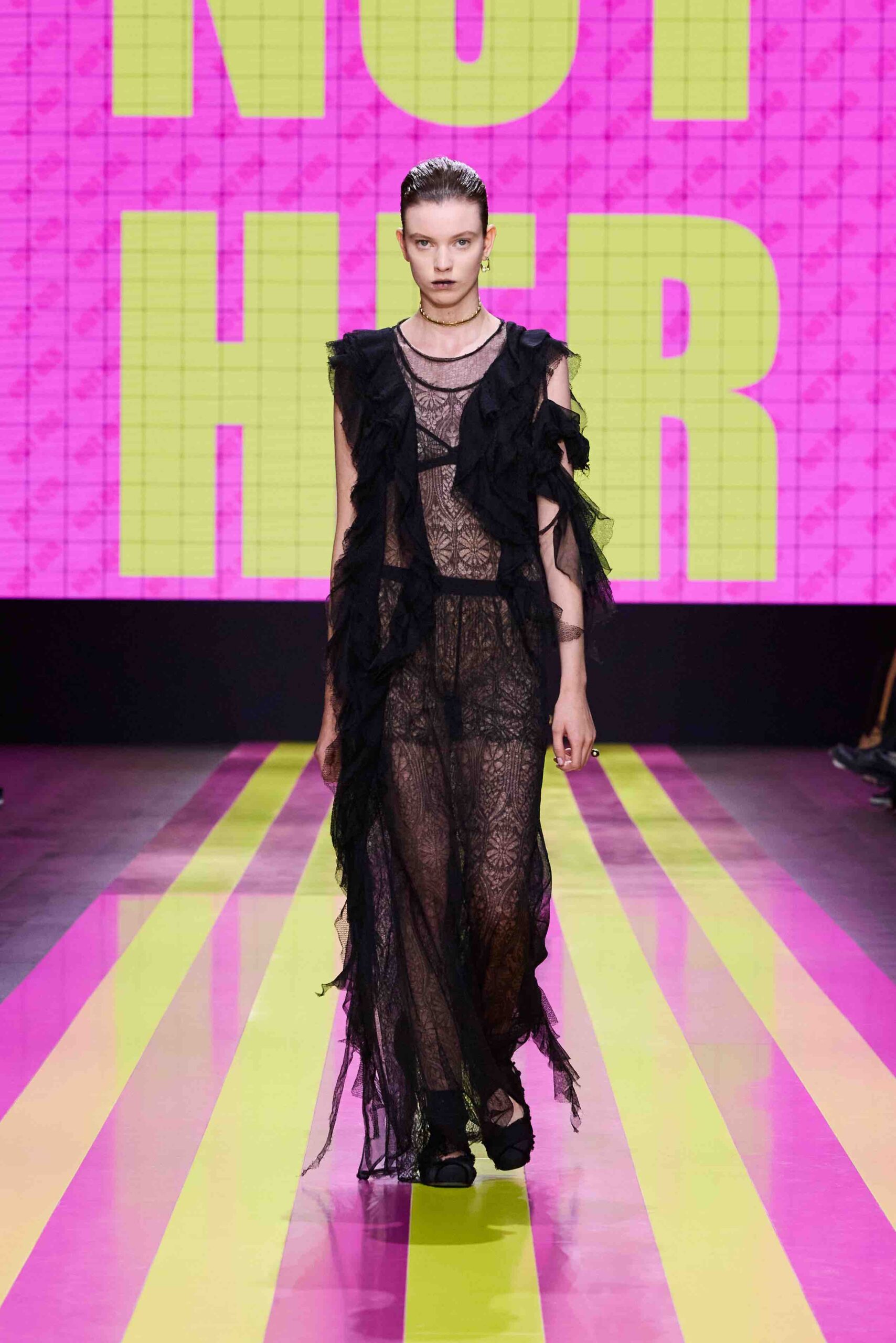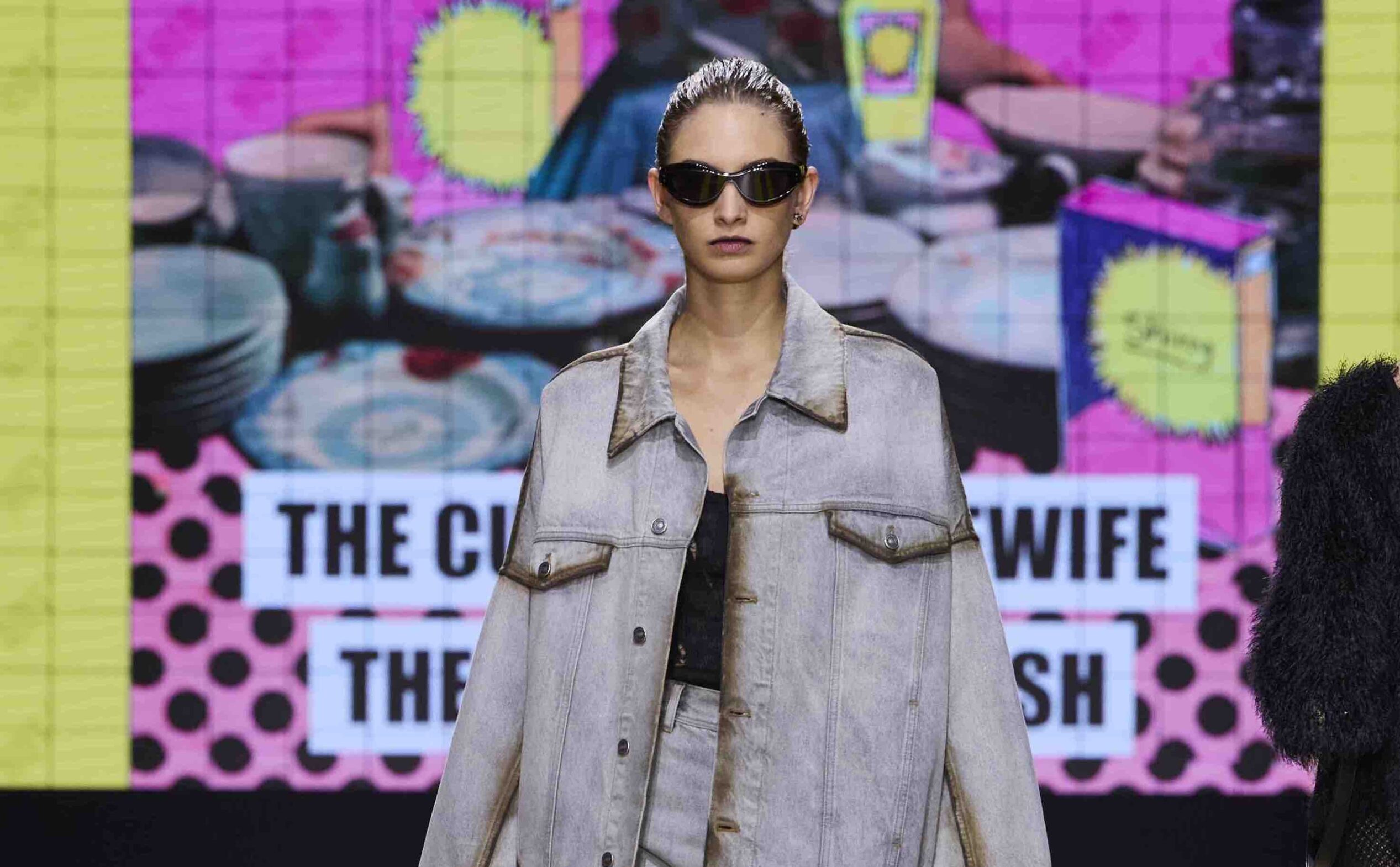The fashion show – one of the pinnacles within the fashion system – becomes with Dior and Maria Grazia Chiuri a political space where new forms of activism can take hold. It is no coincidence that for the prêt-a-porter 2024 show, too, the designer chose to work alongside an artist, again in pursuit of the feminist idea of a common making, a concept of co-authorial work that we have understood to be necessary to her project. Women’s bodies are in fact political bodies even on the catwalk, able to claim their rights and build others within society. Here, the Roman designer overturns everything by bringing the masculine into the feminine, constructing a feminist claim that is nourished by a complex narrative, made up of many theoretical references from feminist literature, such as Silvia Federici’s famous text, “Witches, Witch-Hunting and Women”. The feeling is that from now on there will be a witch’s dress, a ‘delinquent woman’s’ dress – the title of Michela Zucca’s book of the same name – in women’s wardrobes to reinforce and claim their freedom. Dior through an act of imagination – which is fashion – has created a new world in which to negotiate knowledge on the investigation of the feminine. Wearing a masculine shirt that becomes a sensual one-shouldered dress is an act that at the same time activates both the construction of a conscious imaginary and the deconstruction of settled stereotypes. The witch is presented here as the fulcrum of the collection to investigate the rugged territories of women, such as the body, dress and language; she is in fact a figure “against”, rebellious, banished, mystical, who becomes a liberating instrument from the moment she approaches the figure of the Parisienne, also a complex and independent subjectivity.

“I was interested in reasoning about the stereotype of witches and how, to be defined as such, it is women who have refused to conform to the rules imposed on them by others.”
The video installation ‘NOT HER’ by artist Elena Bellantoni visually reinforces the issues the collection wants to question, namely the responsibility of images in creating stereotypical narratives about femininity and women. Slogans such as ‘we want kids but we want roses too’, or ‘women struggle is gender struggle’ are spread over seven metres of fuchsia and yellow LEDs, an increasingly pressing investigation into patriarchal stereotypes to which we are called to respond, which inevitably involves fashion. Bellantoni’s art is a savage attack on the male gaze that made its way into the advertising slogans of the 1990s, and is presented on the catwalk clearly as a reactionary longing for the years of classic couture photography by men like Richard Avedon and Irving Penn, where chiaroscuro silhouettes obscured women’s faces.


The feminist discourse that underlies the collection does not make Chiuri lose sight of the work on Monsieur Dior’s archives: on the catwalk parade the new and light Bar jackets with maxi skirts in combination with oversize shirts and very light garments, a style that we have already seen on the Dior catwalk as representative of the designer’s personal taste. The reworking of codes is cleverly in line with the modern touch, such as the performance dresses made of rips, tears and combustions that recall the works of Alberto Burri’s Arte Povera, where signs of poverty become expensive decorations. Against the saturated backdrop of the video installation, a strictly neutral palette moves, the clothes have ash and chamomile tones.The opening features delicate lace and chiffon shredded fabrics, while blazers flaunt narrow-waisted feminine shapes.Long pleated skirts with a jacket and white blouse, the Abandon neckline that becomes a blouse or pinafore dress, capes and parkas with hooks and studs, bras and culottes in transparency, leather camioneurs, fishnet dresses, macramé jackets and skirts, sleeveless robe manteau, skirts made of fringes. All on shoes made of draped gros grain that bring together the idea of a décolleté and gladiator sandals. In the last block, long black coats alternate with nylon jackets with pockets and double-function zips, while minimalism returns central for a series of straight-cut, light dresses, where intricate lace re-emerges in beige, offering a regal finish even to formal, asymmetrical tops.

“Christian Dior developed women’s fashion from men’s fashion, from the jacket to the shirt: the former became the Bar, the latter all chemisier dresses.”
Together with the set design, the architectural silhouettes convey a strong narrative about the present in which witches and ‘rebellious women’ still have the task of burning stereotypes instead of “being burnt”. The new iconography staged ultimately rethinks a compromised terrain that for women is the body, a battlefield on which freedom and power, desire and repression are measured; the choral work carried out by the Dior team succeeds in restoring it in a way that is by no means didactic, but rather inspirational and cultured, transforming the SS24 collection into a brand new story.














